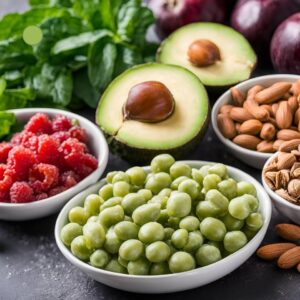You may find these 12 unusual signs that could indicate damage to your liver. It’s crucial to know these signs, because you can take steps to prevent the disease from getting worse. Your liver has a remarkable ability to heal itself, with some assistance.
The prevalent belief that liver damage primarily results from excessive alcohol consumption is somewhat misguided. In fact, an overload of sweetened and processed foods and beverages, excessive intake of omega-6 vegetable oils and fast foods, frequent use of painkillers such as acetaminophen or ibuprofen, viruses leading to liver damage and hepatitis among other factors, and the list goes on and on. If you want to check for liver issues, stick around and watch this video all the way to the finish. We’ll also discuss some simple home remedies to detoxify your liver and stop further damage.
Sign number 1 : The initial sign of liver issues is having light-colored stools. When you go to the bathroom, your liver sends albiol acids to assist in digesting fats from the food you eat.
Giving your stool its typical brown hue. But if you’re dealing with fatty liver disease or liver damage, this bioflow can become disrupted, resulting in lighter or clay-colored stools. In some cases, the stool might even float on the toilet water due to undigested fat making it buoyant.
Sign number 2 : Involves experiencing difficulty with night vision. If you find it challenging to see clearly in low-light conditions, especially at night, it could be a sign of a deficiency in retinol or vitamin A. Your liver’s bile production plays a vital role in helping you absorb vitamin A, which is crucial for the rod cells in your eyes to adapt to varying light levels. Liver disease, however, can disrupt this process, leading to inadequate vitamin A absorption, resulting in what we call night blindness. His symptom may also suggest a congested gallbladder, particularly if you also experience dry, sore, irritated, and gritty eyes.
Sign number 3 : The third symptom is a swollen right foot. When the blood flow in your liver isn’t as it should be, it can lead to swelling and enlargement of the liver, which in turn exerts pressure on the portal vein. This can result in the accumulation of fluid or water in the legs or feet. When you press your finger into the swollen area, it may leave an indentation. If you observe that your right foot or ankle is more swollen than the left one, this is a common sign of potential liver damage. We’ll delve deeper into natural remedies for improving liver function later in the video.
Sign number 4 : White Eyelid Growth Another unusual indicator of liver damage is the emergence of small, white or yellowish growths around your eyelids. These are tiny collections of cholesterol deposits that accumulate beneath your skin due to the liver’s inability to break down cholesterol effectively, leading to its buildup in various parts of the body.
Sign number 5 : is experiencing pressure on the right side. Another potential indication of liver disease is the sensation of pressure or discomfort on the right side of your rib cage, particularly after eating. Liver damage can lead to the bile becoming thick and sludgy, which can block the small tubes connecting to your gallbladder, resulting in a pressure and discomfort around the ribs.
This pressure can also affect the phrenic nerve, causing muscle tension and pain in the region around your right shoulder. Sign number
Sign number 6 : involves the presence of purple and red spots. When your liver is congested, inflamed, or impaired, it produces fewer proteins necessary for proper blood clotting.
As a result, you may be more prone to bruising, and occasionally, you might notice unusual purple or red bumps resembling a rash on your skin, along with small red patches. This often occurs in areas like the lower legs or arms, and it’s attributed to the diminished blood circulation associated with liver disease, or possibly diabetes.
Sign number 7: We have cracked heels. Your body relies on vitamin B3, also known as niacin, to maintain the strength, smoothness, and moisture of your skin to prevent it from getting damaged. But if you’re dealing with liver disease, your body redirects its niacin reserves to repair the liver damage, leaving less of this essential nutrient for other functions. This can lead to the skin on the soles of your feet and heels becoming dry and cracked. You can address this issue by increasing your intake of vitamin B3 and addressing the underlying problem, which is often fatty liver disease.
Sign Number 8 : Another symptom of liver disease is experiencing a persistent urge to scratch or itch the palms of your hands or the soles of your feet. This condition arises due to a buildup of bile acids beneath the skin resulting from the liver’s inadequate filtration of these acids.
This buildup leads to an accumulation of histamines in the bloodstream, triggering the itchy sensation.
Sign number 9 – is having all white or clubbed nails. If your fingernails start to turn completely white, losing their natural pink color, or they adopt a rounded, clubbed, or bulbous shape, it may be a sign of significant liver damage or another underlying health issue.
This condition can hinder the delivery of oxygen to the nail matrix. Interestingly, in the 1950s, researchers found that 8 out of 10 individuals with severe liver scarring had nails that were entirely white.
Sign number 10 – is dark urine. Your liver plays a crucial role in breaking down old red blood cells, which contain a yellowish pigment called bilirubin. When your liver or gallbladder sustains damage, this pigment can accumulate in the body and eventually get flushed out through the urine. As a result, your urine may take on a very intense dark orange, amber, brown, or cola-like color because your liver isn’t processing the pigment as it should. Additionally, certain medications, such as antibiotics, sleeping pills, or birth control pills, can also contribute to this discoloration by placing strain on your liver.
Sign number 11 – is yellowed skin. When your liver is not functioning correctly and is unable to effectively filter bilirubin from your blood, it can lead to a change in the color of your skin. This can result in a yellowish hue on the skin, a condition known as jaundice. Jaundice is a clear indication of significant liver damage, which could be due to conditions like hepatitis, cirrhosis, or drug or medication poisoning. If you experience yellowing of the skin, it’s crucial to seek medical attention and consult your doctor.
Lastly, sign number 12 – is the presence of spider veins. Spider veins resemble tiny red dots, with spider-like extensions of blood vessels that become visible on the skin. These are blood vessels that have suffered damage because your liver is not effectively filtering out excess estrogen.
Elevated estrogen levels can weaken the blood vessels in the veins, leading to their dilation and the appearance of these spider-like veins on the skin. If you experience any of these symptoms we’ve discussed here, it’s strongly advisable to schedule a visit to your doctor and request an ultrasound examination. How to Reverse Liver Disease As mentioned earlier, the liver undergoes for distinct stages of damage.
Initially, it accumulates fat, followed by inflammation and the formation of scar tissue known as fibrosis. In the most advanced and potentially life-threatening stage, it progresses to cirrhosis. Fortunately, there is hope because the liver possesses the remarkable capability to fully regenerate and recover.
When you make dietary improvements and employ the appropriate remedies. So, let’s go through the most important steps to reverse liver damage.
Action 1: Improve your diet by reducing your intake of sugary, starchy, and flour-based foods such as bread, cookies, candies, ketchup, pancakes, pasta, and soda.
A fatty or impaired liver is responsive to fructose, which is the sugar found in fruits, much like it is to alcohol.
Action 2: Incorporate plenty of bitter and sulfur-rich foods into your diet. These include leafy greens, artichokes, radishes, garlic, broccoli, Brussels sprouts, kale, cabbage, mushrooms, pasture-raised eggs, wild salmon, oily fish, walnuts, onions, scallions, and broccoli sprouts.
Foods rich in sulfur can aid in reducing fat buildup in your liver by increasing glutathione levels and supporting the detoxification of harmful substances.
Action 3. Start your day with a cup of homemade, organic coffee, adding a teaspoon of turmeric. The polyphenols in coffee and the phytonutrients in turmeric are effective at reducing the formation of scar tissue in the liver and promoting its repair from damage caused by alcohol, drugs, or fructose.
Additionally, aim to consume at least one liter of high-quality mineral water throughout the day to help thin your blood and support the liver in producing bile to break down fatty deposits for enhanced toxin filtration in your liver. Consider adding freshly squeezed lemon or lime juice.
- Easy Workout Plan for a Fit BodyHaving an effective workout program is extremely important towards achieving… Read more: Easy Workout Plan for a Fit Body
- Variety of Foods that can be Healthy & Tasty!Calories are important. Your body needs them to maintain various… Read more: Variety of Foods that can be Healthy & Tasty!
- 10 Healthiest Foods with ‘No Carb’ & ‘No Sugar’Looks like someone wants to shed some pounds and get… Read more: 10 Healthiest Foods with ‘No Carb’ & ‘No Sugar’
- The Cholesterol ConundrumAre you aware that high cholesterol can silently creep up… Read more: The Cholesterol Conundrum
- Find Balance and Harmony: How Yoga Can Help Manage Blood Pressure and Blood SugarAre you tired of feeling stressed and overwhelmed, struggling to… Read more: Find Balance and Harmony: How Yoga Can Help Manage Blood Pressure and Blood Sugar
- Introduction to Web Stories and Step-by-Step Process of Making ThemIn the age of digital storytelling, Web Stories have emerged… Read more: Introduction to Web Stories and Step-by-Step Process of Making Them
- The Evolving Landscape of Bollywood: Engaging Modern ViewersThe Bollywood film industry, once a behemoth of vibrant storytelling… Read more: The Evolving Landscape of Bollywood: Engaging Modern Viewers
- 10 Magical Tips to get cured from AnxietyIn this post, we will discuss regarding impact that anxiety… Read more: 10 Magical Tips to get cured from Anxiety
- Alcohol: A Double-Edged Sword for HealthAlcohol as a social culture Alcohol is seen as necessary… Read more: Alcohol: A Double-Edged Sword for Health
- Prevent Pimples: Simple 10 Home Care Tips to Achieve Clearer SkinPimples, also known as acne, are small inflamed bumps on… Read more: Prevent Pimples: Simple 10 Home Care Tips to Achieve Clearer Skin
- Nourishing Beauty: Unlock the Power of 10 Green Vegetables and Fruits for a Radiant GlowA beautiful skin is something that can make a person’s… Read more: Nourishing Beauty: Unlock the Power of 10 Green Vegetables and Fruits for a Radiant Glow
- A Day in My Life with YogaIntroduction: As a BBA General 1st-semester student at NSHM College,… Read more: A Day in My Life with Yoga
- Detox your Whole Body in Just One Day : advised by Dr. Bimal ChhajerFriends, SAAOL Heart Centre, India’s leading preventive and rehabilitative Heart… Read more: Detox your Whole Body in Just One Day : advised by Dr. Bimal Chhajer
- Keto Diet is Good or Bad for all age of PeopleHave you heard about the keto diet? It’s been gaining… Read more: Keto Diet is Good or Bad for all age of People
- These are Mostly Accepted Foods to Eat Every MorningBreakfast is the most important meal of the day as… Read more: These are Mostly Accepted Foods to Eat Every Morning
- How to get Glowing Flawless Hydrated Natural Skin in this Summer : Best Skin Care RoutineSummer is the season of warmth and holidays, but it… Read more: How to get Glowing Flawless Hydrated Natural Skin in this Summer : Best Skin Care Routine
















